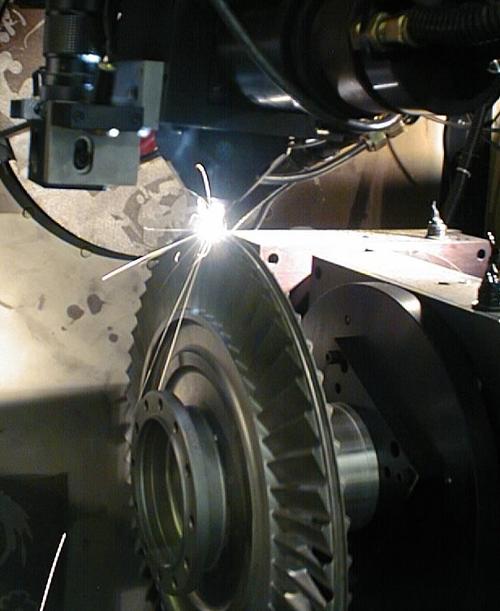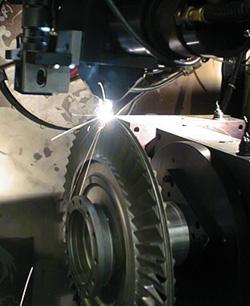GE Aviation, Lockheed & Optomec Star in Metal 3D Printing Project
July 25, 2014

Optomec has been awarded its third America Makes project for metal 3D printing. This one will focus on using the company's LENS 3D metal printing technology for repairing aerospace components used by the US Air Force.
The two-year, $4 million "Reborn in the USA" project was kicked off a couple of weeks ago, Tom McDonald, Optomec's America Makes program manager, tells Design News in an interview. The project team consists of 23 partners, and includes aerospace giants like GE Aviation, Lockheed Martin, Rolls-Royce, and United Technologies Research Center. It also includes several technology experts such as Concurrent Technologies Corporation. The goal is to come up with a cost-effective and reliable approach and guidelines for repairing high-value metal components, instead of lengthy and expensive existing processes such as welding by hand.

The Air Force already knows that the LENS additive manufacturing (AM) method can be used for repair, since that's been demonstrated previously by the military, says Ken Vartanian, Optomec's vice president of marketing, during the same interview. In a Design News feature article, Vartanian described the use of AM technology to repair engine components for the Abrams M1 Tank by the Anniston Army depot in Huntsville, Ala.
Air Force interest in the current project is due to the potential for metal AM processes such as LENS to reduce costs, improve quality, lengthen lifetime, and return critical components to service faster. "The Air Force realizes there are several barriers to getting these processes qualified," says McDonald. "They have lots of parts that could be repaired instead of thrown out, but there's not yet an AM process that can do so and also ensure the part's flight-worthiness. The actual certification and qualification of the process is lengthy and complex."
Although there are some emerging process monitoring and process control concepts that can be employed, the real focus isn't trying to develop something new. Instead, it's utilizing the existing knowledge base of best practices for each aspect of the process, whether it's powder, process control, or measurement techniques, and developing a set of specifications for repairing aerospace metal components. This becomes more complex due to the global location of various OEMs, practitioners, and powder suppliers involved in a given metals AM process.
In the first stage, candidate applications will be defined so project leaders can then identify an ideal application to focus on. The Air Force high-value components applicable to this project are nearly always flight-critical and involve legacy flight programs. There's a limited availability of spare parts, and replacing them is expensive and difficult.
During the Reborn in the USA project, the Air Force wants to qualify a process and develop a roadmap, says McDonald. There will be two types of deliverables. The first will be identifying a specific component for study, and progress as far as possible in developing the complete repair process, including a knowledge base. The second will be determining similar steps needed for the kinds of optimum powder feedstock and post-processing required for that component, along with improving process monitoring and control, so that the guidelines can be used by multiple practitioners.
LENS metal 3D printing technology is based on metal laser deposition. It's especially adaptable to repair techniques, because it can add metal onto existing substrates that are not flat, but can be almost any shape. The technology is already used in repair operations for ground-based defense and non-defense applications. You can access a data sheet here.
Optomec's existing America Makes projects are the development of knowledge bases of deposition parameters for Ti-6Al-4V and IN718 (Inconel) using the LENS process and the development of a low-cost LENS print engine that can be installed on most machine tools to form a hybrid system.
Related posts:
About the Author(s)
You May Also Like
.jpg?width=300&auto=webp&quality=80&disable=upscale)


